Personally, I use one knife about 95% of the time: an 8-inch top quality chef’s knife. Don’t let the high price tag scare you. A well-crafted knife lasts for decades, and it’s worth the investment. Because I tend to be a minimalist in the kitchen, I’m always looking for tools that can accomplish several different tasks in one. I’d rather have one expensive knife that can complete 4 - 5 different tasks than invest in an individual tool for each job. Besides, there’s less cleanup my way.
So, how do you choose a good knife? Well, if the chef’s knife in your $60 wood block set is letting you down, there’s probably a good reason.
You get what you pay for.
In cooking, I always say that great meals start with using great ingredients. That philosophy is also true for knives-it’s all about material. Top quality knives are forged using the highest quality of finely polished stainless steel. Though other materials-including ceramic-have recently been introduced to the manufacturing process, stainless steel remains the preferred choice for most chefs. The weight or feel of the knife should also reflect quality. There should be no joints between the blade and the handle, i.e. seamless integration. The handle should allow for a secure grip, while also being comfortable for use over time. Regarding the surface, the overall appearance of the blade should be smooth and highly polished, serving as sign that the knife is resistant to rust and corrosion. And finally, the cutting edge should retain its sharpness over time. Of course, the last quality is the most subjective to both use and care.
Knives should always be kept as sharp as possible-more on this later. Working with a dull knife causes one to use more pressure, which increases the risk of the blade slipping while cutting. I prefer to always work on a wood or plastic cutting board. These types of surfaces give to the blade versus a glass or ceramic surface, which helps retain the edge. Of course, you always want to cut away from your body. Like most of my more expensive cookware, I prefer to hand wash and dry my knives instead of using the dishwasher. This ensures that the knives are not damaged should they come in contact with other objects. Lastly, always store knives in a knife block or secure tray when not in use.
Though my chef’s knife is my work horse, there are other types of knives and tools that I find particularly useful. From left to right, they are as follows.
Steel - a tool used to sharpen knives.
Honing Kitchen Knives
Step 1: Hold the steel and knife in opposing hands, firmly gripping the knife and holding the steel down, away from the body.
Step 2: Place the heel edge of the knife at a 20 degree angle from the steel.
Step 3: Pull the knife down the steel, from heel to tip, maintaining an angle of 20 degrees.
Step 4: Repeat this procedure 4 - 6 times, alternating between the left and right side of the blade.

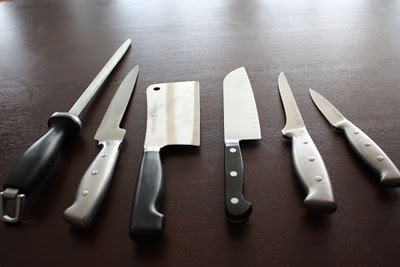
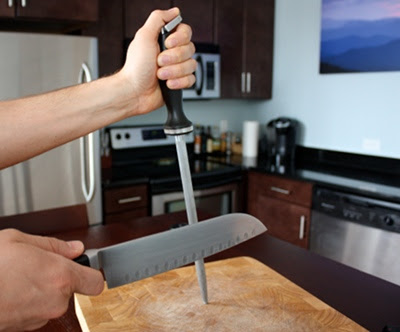
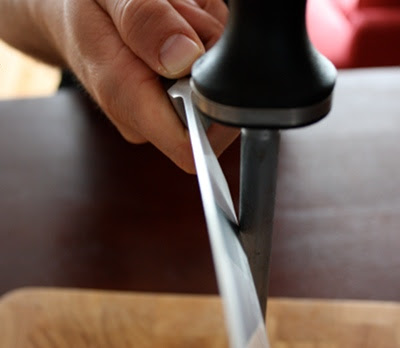
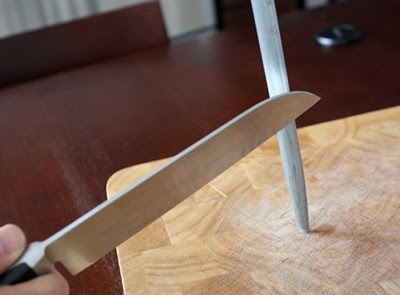
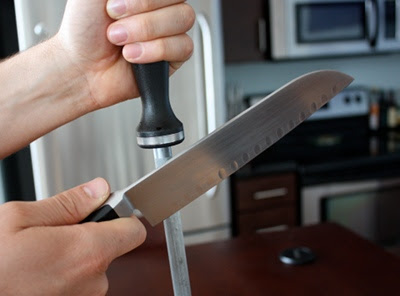


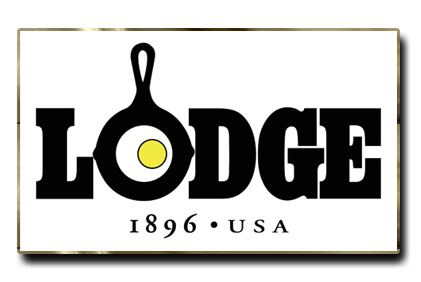





No comments:
Post a Comment